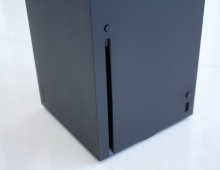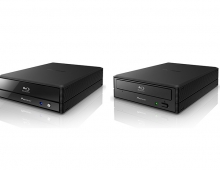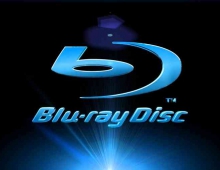
AACS Copy Protection Issues Delay Blu-Ray Drives'Launch
The members of the AACS LA, the Blu-ray Disc Association and the HD DVD representatives have once again failed to come up with an agreement concerning the finalization of the AACS copy protection for Blu-Ray and HD DVD devices.
Last week's meeting was expected to finalize the specifiacions of the Advanced Access Content System (AACS), the copy protection scheme that will be part of both HD DVD and Blu-Ray devices. The Advanced Access Content System Licensing Administrator (AACS LA) is responsible for the development of specifications to manage content stored on next-generation optical media used on PCs and CE devices.
But according to industry sources, the meeting participants did not agree on the way the AACSS would intergrate the Blu-Ray's additional BD+ protection for the Blu-Ray movies. Specifically, one of the key BDA board-members had concerns regarding the relationship between AACS and BD+. Japanese sources indicate that the next meeting to conclude AACS matters will take place around the 23rd/24th of this month.
The finalization of AACS specifiations is the main factor to determine due dates of the first Blu-Ray and HD DVD drives and media in the market. The majority of hardware makers are currently waiting for the green light from the AACS LA to implement AACS in their hardware. For example, the introduction of the Pioneer BDR-101A ("A" = with AACS copy protection) Blu-Ray disc drive will probably be delayed. Samsung, NEC and Toshiba are also eagerly awaiting for the AACS licensing finalization.
The lack of AACS protection in next-generation drives would not allow the play-back of high definition (Blu-Ray and HD DVD) video movies at their maximum resolutions; a parameter that Hollywood studios have demanded.
On the other hand, the Mandatory Managed Copy (MMC) issue seems to be clarified now. Both HD DVD and Blu-Ray will implement it, as a part of the AACS specification. Mandatory Managed Copy is the ability to transfer or make copies of the digital commercial content on a protected disc under policies and fees dictated by the content providers (Hollywood). For instance, a consumer could buy a Blu-Ray Disc and then make a backup copy for future use in case of damage or transfer the movie to a portable player for viewing. In case of a movie backup, however, an internet connection is required to authenticate a copy.
Other than the AACS, the Blu-Ray Disc differs from the HD DVD additional elements. The BD+ and the RomMark have been added to help develop a specification that meets the needs of manufacturers and content providers. BD+ relates to the ability to keep content from playing on a known hacked player while the RomMark is a manufacturing mark placed on the disc to help reduce mass piracy of discs. Specifically, the Blu-Ray's Java software constantly monitors the movie's data stream and stops playback if it tracks any kind of manipulation in the player. Moreover, the ROmMark will be placed on a specified position of a Blu-Ray disc. The precise position will be unique to the machine that mastered the content, enabling enforcement authorities to to determine whether or not a disc has been created legally.
This latest delay in the AACS licensing procedures is expected to hold back the introduction of the first HD DVD players in March (Toshiba), as well as the launch of the first Blu-Ray drives for PCs.
But according to industry sources, the meeting participants did not agree on the way the AACSS would intergrate the Blu-Ray's additional BD+ protection for the Blu-Ray movies. Specifically, one of the key BDA board-members had concerns regarding the relationship between AACS and BD+. Japanese sources indicate that the next meeting to conclude AACS matters will take place around the 23rd/24th of this month.
The finalization of AACS specifiations is the main factor to determine due dates of the first Blu-Ray and HD DVD drives and media in the market. The majority of hardware makers are currently waiting for the green light from the AACS LA to implement AACS in their hardware. For example, the introduction of the Pioneer BDR-101A ("A" = with AACS copy protection) Blu-Ray disc drive will probably be delayed. Samsung, NEC and Toshiba are also eagerly awaiting for the AACS licensing finalization.
The lack of AACS protection in next-generation drives would not allow the play-back of high definition (Blu-Ray and HD DVD) video movies at their maximum resolutions; a parameter that Hollywood studios have demanded.
On the other hand, the Mandatory Managed Copy (MMC) issue seems to be clarified now. Both HD DVD and Blu-Ray will implement it, as a part of the AACS specification. Mandatory Managed Copy is the ability to transfer or make copies of the digital commercial content on a protected disc under policies and fees dictated by the content providers (Hollywood). For instance, a consumer could buy a Blu-Ray Disc and then make a backup copy for future use in case of damage or transfer the movie to a portable player for viewing. In case of a movie backup, however, an internet connection is required to authenticate a copy.
Other than the AACS, the Blu-Ray Disc differs from the HD DVD additional elements. The BD+ and the RomMark have been added to help develop a specification that meets the needs of manufacturers and content providers. BD+ relates to the ability to keep content from playing on a known hacked player while the RomMark is a manufacturing mark placed on the disc to help reduce mass piracy of discs. Specifically, the Blu-Ray's Java software constantly monitors the movie's data stream and stops playback if it tracks any kind of manipulation in the player. Moreover, the ROmMark will be placed on a specified position of a Blu-Ray disc. The precise position will be unique to the machine that mastered the content, enabling enforcement authorities to to determine whether or not a disc has been created legally.
This latest delay in the AACS licensing procedures is expected to hold back the introduction of the first HD DVD players in March (Toshiba), as well as the launch of the first Blu-Ray drives for PCs.





















